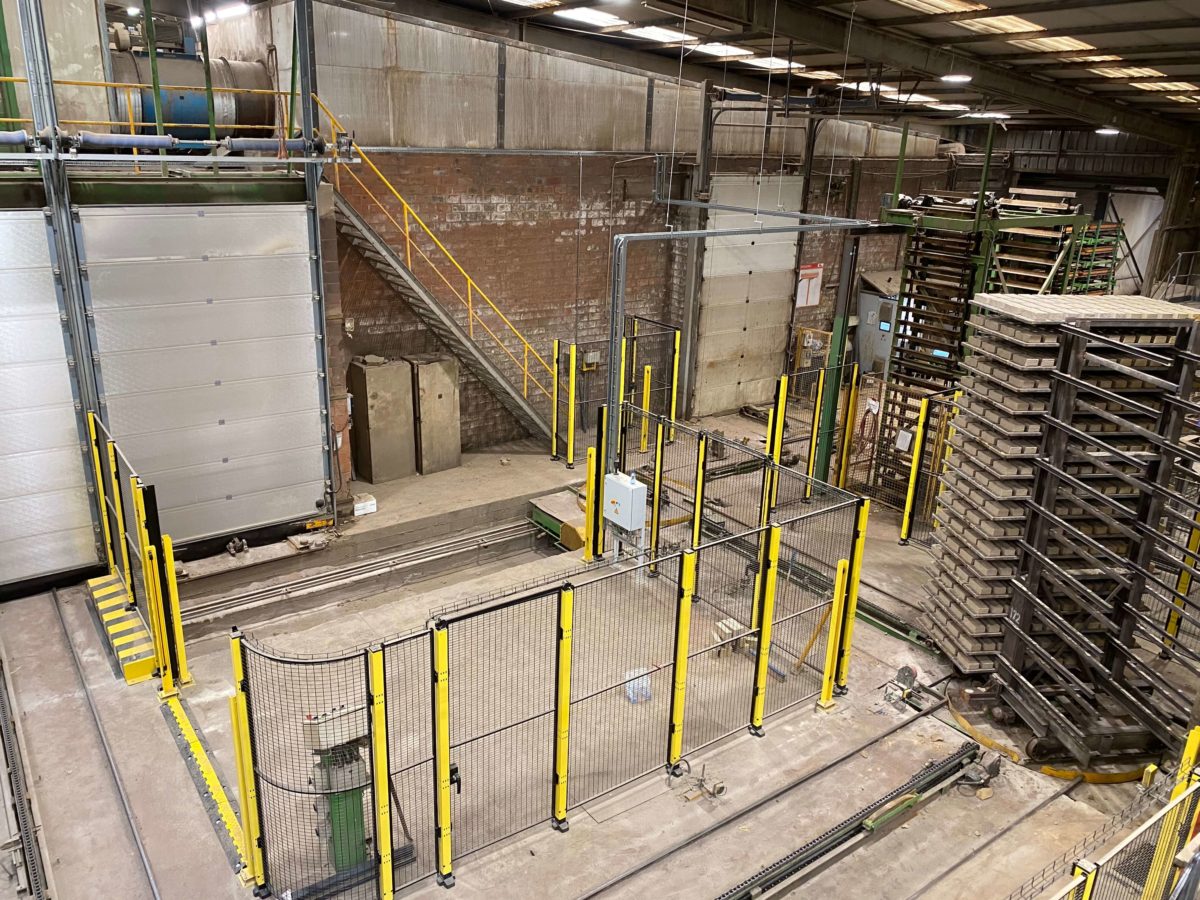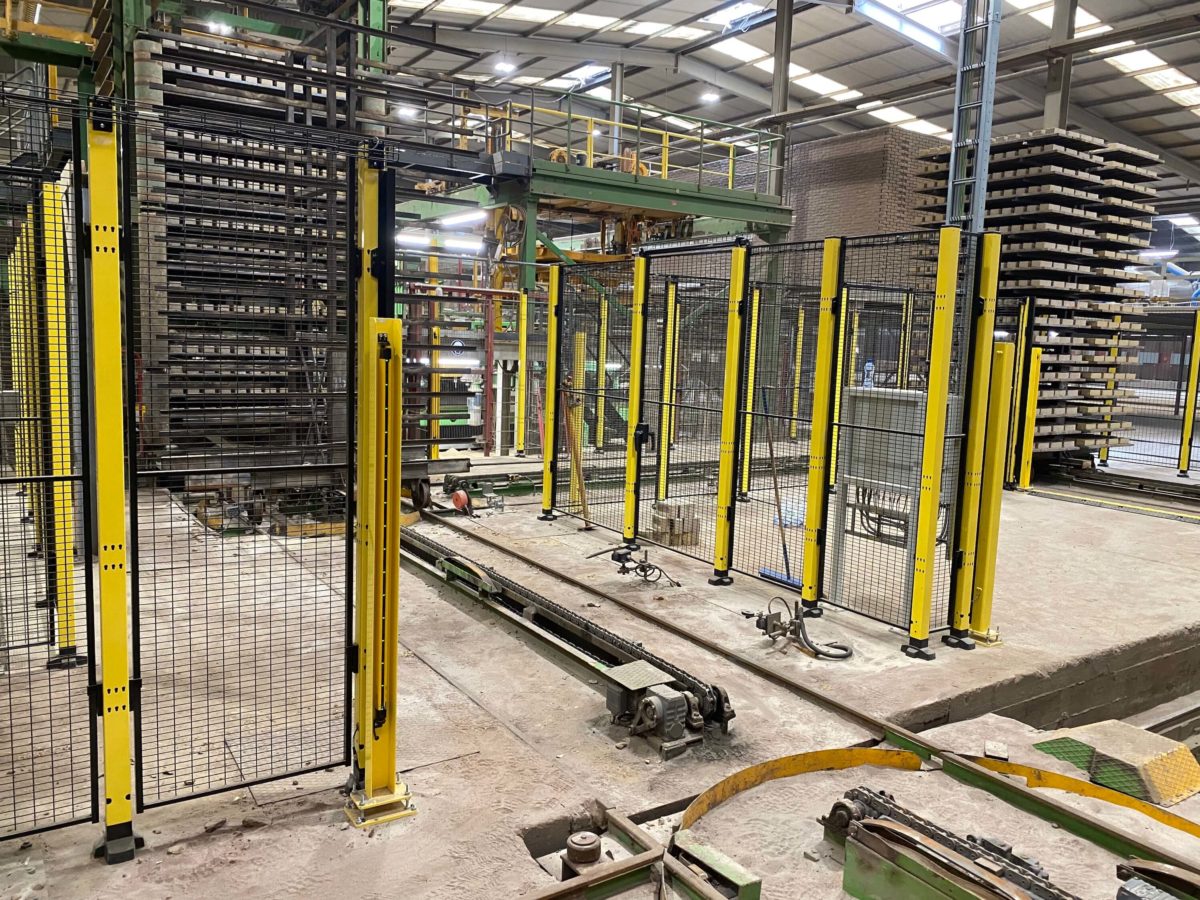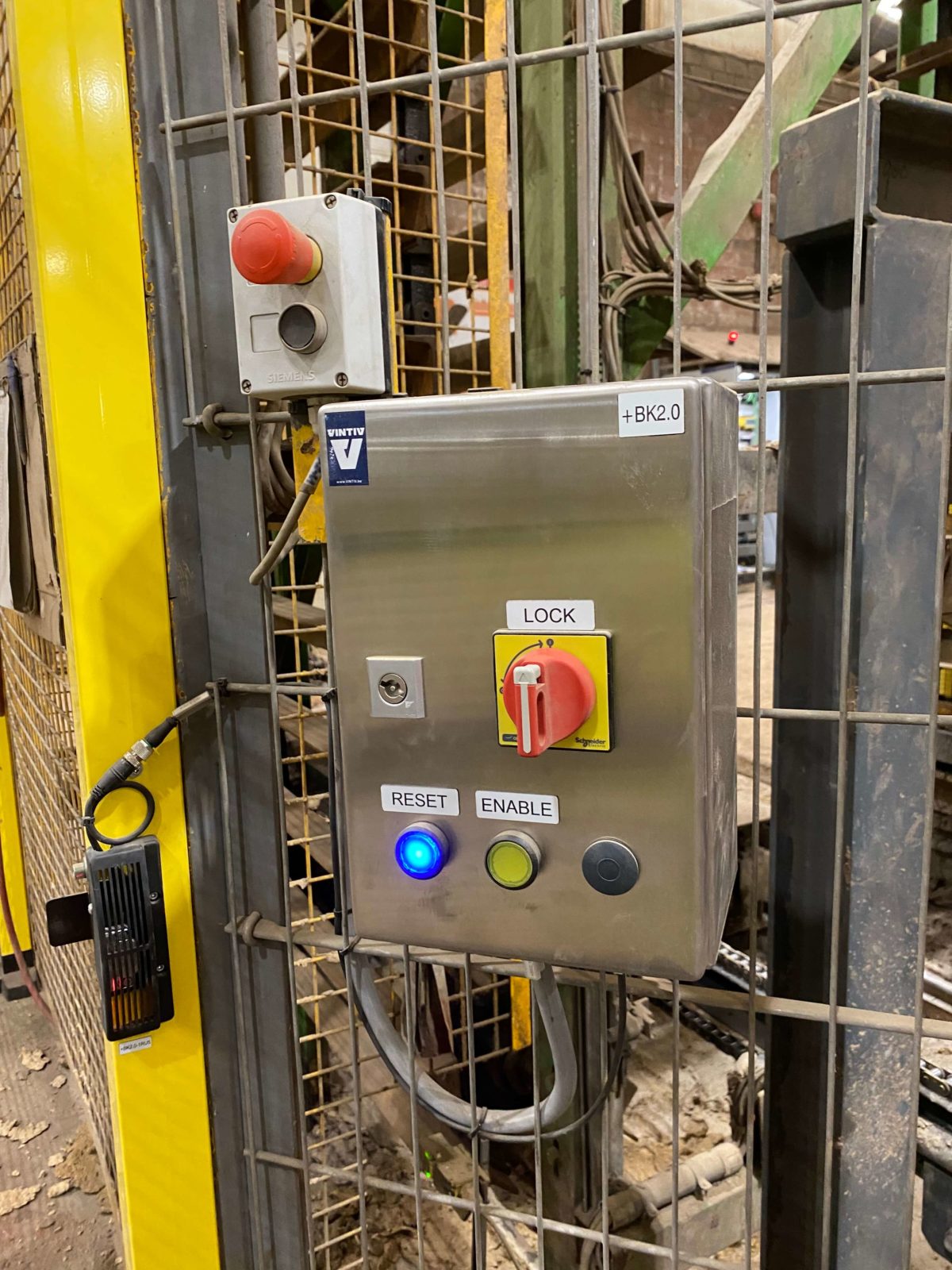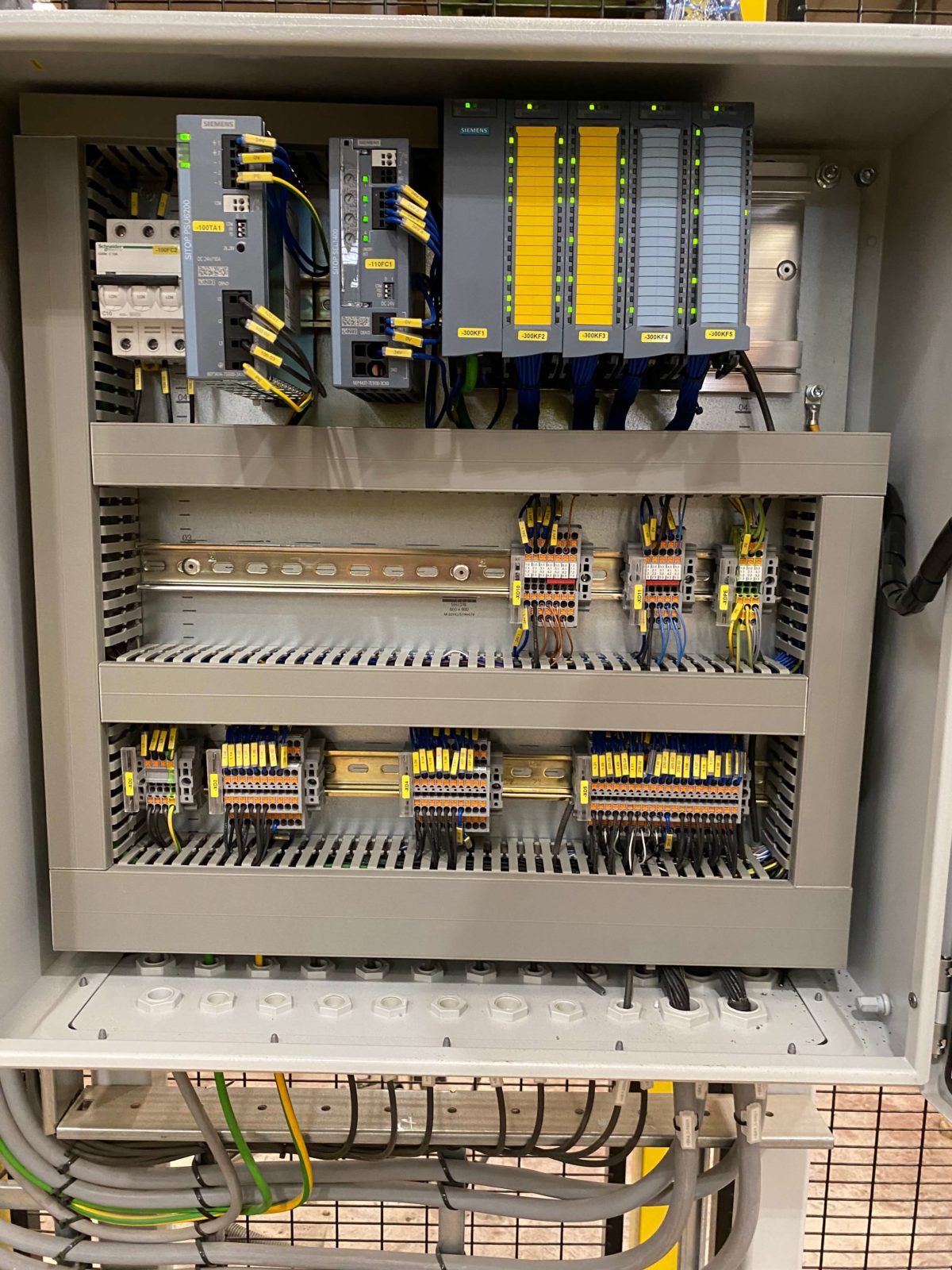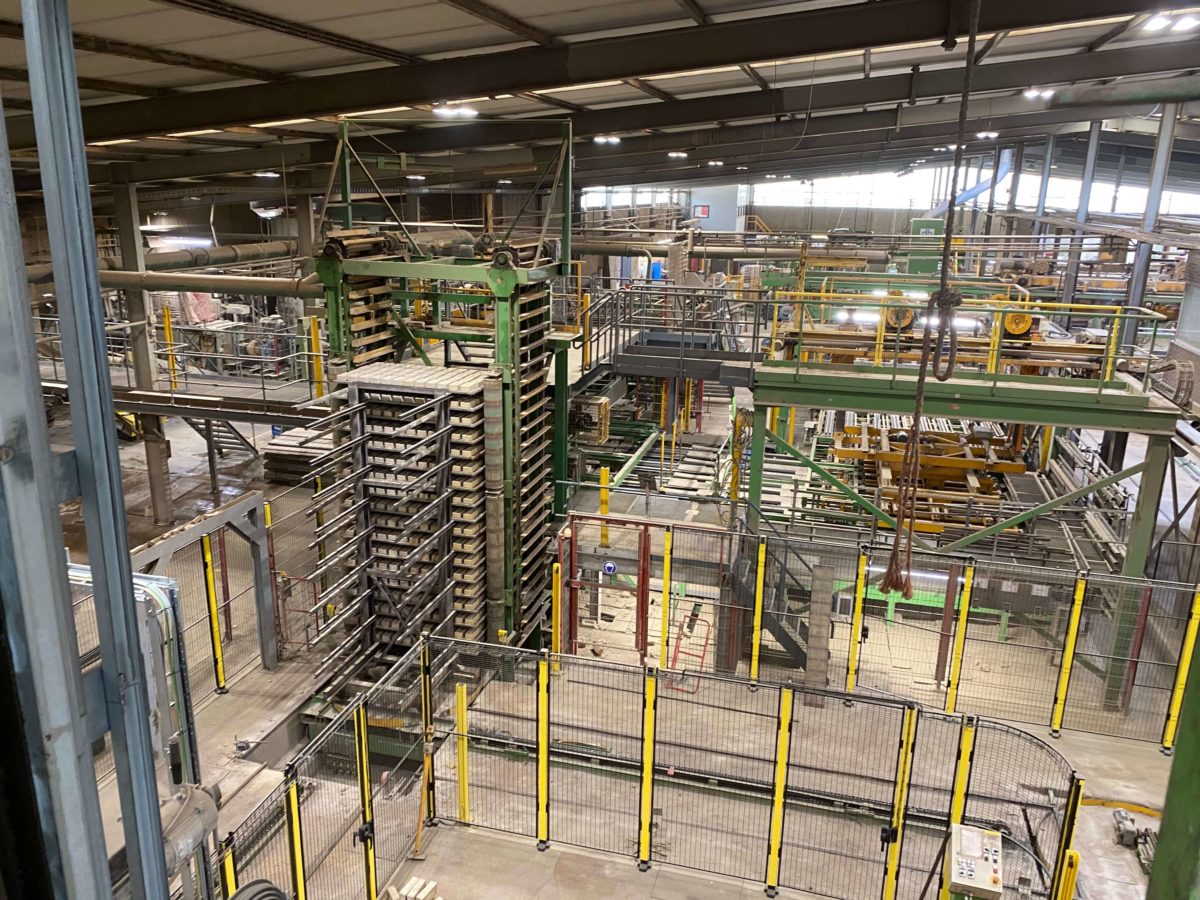SAFETY RETROFIT FOR A WIENERBERGER BRICK-SETTING MACHINE
Challenge
Wienerberger Lanaken. One of the sites where this building materials manufacturer makes facing bricks.
Because their brick-setting machine suffered from safety problems their production manager had Pilz carry out a risk analysis. This kind of analysis makes for a good starting document but it is based purely on legislation – there is no practical elaboration on budgeting or feasibility.
It is then up to us to convert the risk analysis into mechanical, electrical and software solutions that we can then implement in and around the setting machine.
Solution
We started by translating the risk analysis into a workable safety concept.
That began by learning how the setting machine works. To this end, we interviewed everyone involved in the manufacturing activities: operators, maintenance staff, process engineers, etc. This creates a working document in which every party has a say. It is the best way of ensuring a workable plan.
At the same time, we mapped out the setting machine in digital form.
All this formed the basis for developing the safety plan for this safety retrofit. We made an overview of the options available for implementing risk reductions. With a sketch of each intervention and an explanation of its technical impact and implementation as well as the budget for labour and materials.
A retrofit that goes further
As full-service machine developers, we always take a broader view (while keeping safety as an absolute priority) because a safety retrofit often creates opportunities in other areas. Here, too, we proposed a few simple interventions to improve the productivity of the machine.
In this way, we gave Wienerberger everything they needed to assess their business case. They obtained a clear picture of the possibilities and how these could be implemented.
- What is feasible?
- What is affordable?
- What are the benefits of each intervention?
So they could make the right decisions based on the figures.
Preparation and guidance
Once they had agreed to this, it was time for step two: our software engineers and technicians began work on integration and implementation.
We build, test and prepare as much as possible in our workshop. For example, we were able to quickly integrate the new electrical cabinet on-site and pre-fabricate the fencing modules for immediate installation. In this way, we shortened the conversion time and thus kept the downtime to an absolute minimum.
The third and final step was training. We trained the operators and went through the interventions together with the Wienerberger maintenance technicians. We documented everything in detail so that every aspect of the machine was 100% transparent.
Results
- A compliant and safe setting machine: new control cabinet, emergency stop, fencing, light curtains, etc.
- The installation has greater productivity.
- Better cooperation between operator and machine.
- A saving in direct and indirect costs: less downtime, lower absenteeism, less loss of production …
- A safety retrofit that exploits opportunities in other areas.
- One overall partner for the entire safety retrofit, combining concept and integration. Mechanical, software, electrical … This is how Wienerberger avoids grey areas, different points of contact and shared responsibilities.
